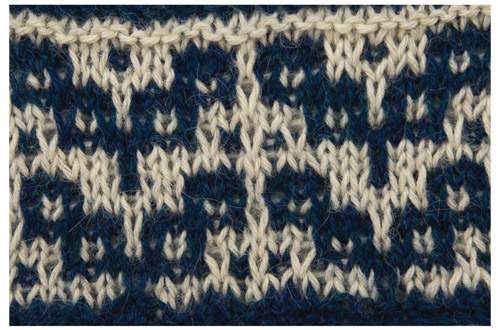ACKNOWLEDGMENTS
I t may be my name on the cover, but it took the hands and minds of many people to make this book a reality and I would like to take a moment to acknowledge them.
Technical editors are indispensable in ensuring that the patterns are accurate and free of errors. My thanks to both Heather Zoppetti and Tana Pageler for their services in this area.
It took a lot of knitting to make all of the samples in this book come to life and I thank Lois Mitchell for being my extra pair of capable hands.
I may or may not have an inordinate fondness for commas and run on sentences. The thanks for keeping this proclivity in check goes to several eagle-eyed proofreaders, namely Heather Zoppetti, Trish Marickovitch, and Betty Salpekar.
The beautiful models who made my accessories come to life are: Chelsea Drummond, Emily Drummond, Rosemary Fernandez, Valerie Joern, Edward Maurer, Stephanie Owen, and Sonja Szubski.
Thank you to Pam Hoenig for making me believe that I could write this book in the first place.
And finally, this book would not exist if it were not for the unfailing support of my loving family. Thank you Roger and Elliott for putting up with endless knitting and a distracted Mom for the duration of this project. I love you both.
Getting Started with Mosaic and Lace
Meet the Slip Stitch
Mosaic colorwork falls under the heading of slip-stitch knitting, which is fairly self-explanatory in its title. It is easy to add the slip stitch to your knitting repertoire; to slip a stitch you simply transfer a stitch from your left needle to your right needle without actually knitting (or purling) the stitch. There are two basic ways to slip a stitch, knit-wise or purl-wise.
To slip knit-wise, insert your right hand needle as if to knit and slip the stitch to your right hand needle.
To slip purl-wise, insert your right hand needle as if to purl and slip the stitch to your right hand needle.
Slipping knit-wise changes the orientation of the stitch, creating a twisted stitch, while slipping purl-wise does not. Unless you are directed otherwise, the assumption in this book is that you are to slip a stitch purl-wise. One significant exception to this rule is when working a left-leaning decrease (ssk or skp). There are many schools of thought on how to slip the component stitches of an ssk; for the purposes of this book, you are to slip each of the two stitches that make up the ssk knit-wise.
With the slip stitch added to your knitting bag of tricks, we are ready to move on to mosaic.
Mosaic Colorwork
At its most basic, the mosaic colorwork technique is knitting stripes and slipping stitches in pattern. Mosaic patterns, as defined by Barbara Walker in her seminal work Mosaic Knitting, have a distinct linear and geometric appearance, frequently focusing on repeated patterns. As an introduction to mosaic, we are going to begin with understanding her original style of patterning. It is always good to know the basic rules before you set about bending them to suit your fancy.
To begin, here are a few basic rules that define Walkers mosaic:
You are working in either stockinette or garter stitch.
You are knitting two-row (or two-round) stripes.
You are slipping stitches of the contrasting color purl-wise while holding the yarn to the wrong side of the knitting.
The first two rules allow a Walker mosaic chart to dispose of the return row by making each row do double duty. Each row of the chart represents two rows of knitting. Using standard colorwork conventions, you read the shaded and white squares as instructions on how to work the color pattern. When reading these charts, you work a right-side row by beginning at the lower right-hand corner and reading from right to left, as is typical in all knitting charts.
Walker-style Mosaic Chart
Walker mosaic chart worked in garter stitch
Walker mosaic chart worked in stockinette stitch
The first stitch of the row lets you know the color of the active yarn (white). All white boxes indicate that you should knit that stitch. Inactive colored (shaded) boxes indicate that you are to slip that stitch (see Rule 3). You work across the row knitting white and slipping shaded, repeating any sections as indicated until you reach the end of the chart.
In a traditional chart, you would work the next row from left to right. But what? The next row begins with a shaded box. Ah ha, this is a Walker mosaic chart! Because you are always working in either stockinette or garter stitch and slipping the opposing color there is no need to chart the return row. Instead, you simply work the row you just finished again, working from left to right.
Once you get the hang of it, you wont even need to look at the chart on the return row. If you are working in stockinette stitch, you simply purl the white stitches and slip the shaded stitches (this time with yarn held in front per Rule 3). In garter stitch, you knit the white stitches while slipping the shaded stitches. You will know you are doing it correctly if the yarn in your hand matches the active color of the previous row.
After working a there-and-back-again set of rows, switch your yarns and move on to the next row in the chart, which begins with a shaded box. Once again reading right to left, this row is read the same as the previous stripe, only with the yarns reversed. The shaded boxes are now active and will be knit and the white boxes will be slipped. After the entire row is completed, work the same row you just finished again from left to right to complete your stripe.
Things become slightly different if you are working in the round. The most significant change is that you read the chart from right to left on every pass through a round of the chart. Additionally, for a circular piece it is possible for the first stitch of a round to be a slipped stitch, which puts a bit of a cramp in the whole first stitch tells you the color you are working. This is where knowing you are knitting stripes comes in handy. For any project, you will knit a few foundation rows/rounds to begin your piece. When you begin the chart, you will either switch to the contrasting color and begin the striping pattern or continue in your established pattern if you were already knitting stripes.
As long as you remember that you are knitting stripes (two rows/rounds of each color per Rule 2), then you will know when to change yarns. While this might make working in the round seem a little fiddly, I think it is more than made up for by how it simplifies Rule 3. When you are working in the round, you are always slipping your stitches with the yarn held in back of your stitch. There are no pesky return rows where you need to remember to hold your yarn in front while slipping stitches.
Armed with this knowledge, you are now prepared to knit any pattern with a Walker-style mosaic chart.

















